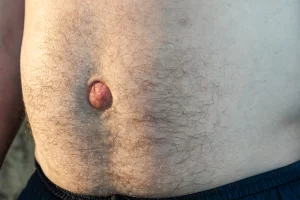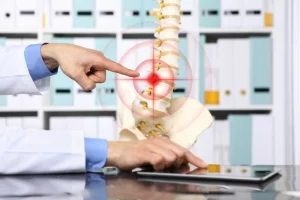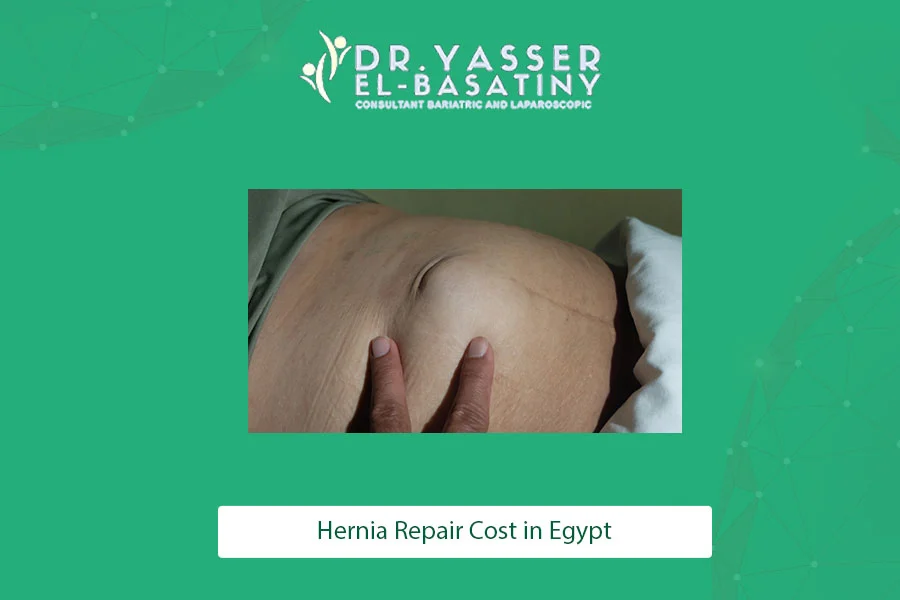Hernia Repair Cost in Egypt. One of the most popular surgical procedures is the treatment of an abdominal wall hernia. People should be especially aware of their options for surgery, anesthesia, and postoperative pain treatment because hernia repairs are common. Through this article, we will discuss the Hernia Repair Cost in Egypt and its type. 

Hernia Repair
Hernia repair is a surgical procedure performed to correct a hernia, which is the protrusion of an organ or tissue through a weakened area in the surrounding muscle or connective tissue. There are several bodily regions where hernias can develop.Hernia Repair Cost in Egypt
Dr. Yasser El-Basatiny Best surgeon for hernia repair, Hernia Repair Cost in Egypt surgery can vary significantly depending on several factors. It’s essential to consider these factors when estimating the overall cost of hernia repair:- Type of Hernia: The specific type and location of the hernia can influence the cost. Some hernias are more complex and require more extensive surgery, which can be more expensive.
- Surgical Technique: The choice of surgical technique can impact Hernia Repair Cost in Egypt. Open hernia repair is often less expensive than laparoscopic or robotic-assisted procedures, which may involve higher technology and equipment costs.
- Hospital or Surgery Center Fees: The facility where the surgery is performed will charge for the use of their operating room, recovery area, and other related services. Hospital fees are typically higher than those of outpatient surgery centers.
- Surgeon’s Fees: Dr. El-Bassatiny’s fee for performing the procedure varies based on their experience, reputation, and geographic location.
- Anesthesia Fees: The cost of anesthesia, whether general or local, is a factor. Anesthesia providers charge for their services.

Types of Hernia Repair
The Hernia Repair Cost in Egypt can depend on the type and each is tailored to the location and characteristics of the hernia. The most common types of hernia repair include:- Open Hernia Repair: In an open hernia repair, the surgeon makes a single incision near the hernia site and manually pushes the protruding organ or tissue back into place. The weakened muscle or tissue is then stitched together to strengthen it.
- Laparoscopic (Minimally Invasive): This is performed using small incisions and a camera (laparoscope) to guide the surgeon.
- Robotic Hernia Repair: A type of minimally invasive surgery where the surgeon uses a robotic surgical system to perform the procedure with enhanced precision and dexterity. It offers benefits similar to traditional laparoscopic hernia repair, such as smaller incisions and faster recovery.
- Suture Repair (Primary Repair): In some cases, particularly with small hernias or in specific situations, the surgeon may perform a simple suture repair, also known as primary repair. This involves stitching the weakened muscle or tissue back together without using mesh.
Hernia Symptoms
Hernias can manifest a range of symptoms, but they typically involve a noticeable bulge or protrusion in the affected area. The specific symptoms and their severity can vary depending on the type and location of the hernia. Common hernia symptoms include:- Visible Bulge: The most common and obvious symptom of a hernia is a visible lump or bulge in the area where the hernia has occurred.
- Pain or Discomfort: Hernias can cause varying degrees of pain or discomfort, which may be a dull ache, burning sensation, or sharp pain at the site of the hernia.
- Pressure or Heaviness: Some individuals with hernias may experience a sense of pressure or heaviness in the area of the hernia.
- Burning or Tenderness: The area around the hernia may become sensitive or tender to the touch, and it may feel warm or have a burning sensation.
- Pain with Activity: Pain or discomfort often worsens when engaging in activities that increase intra-abdominal pressure, such as lifting heavy objects, coughing, sneezing, or straining during bowel movements.

Procedure of Hernia Repair
The procedure for hernia repair can vary depending on the type of hernia and Hernia Repair Cost in Egypt, the surgical technique used, and the patient’s individual characteristics. However, I can provide a general overview of the steps involved in a typical hernia repair surgery:- Preparation: The patient is prepared for surgery, which includes reviewing their medical history, conducting a physical examination, and performing any necessary pre-operative tests, such as blood work or imaging studies.
- Anesthesia: The patient is administered anesthesia. Hernia repair surgery can be done under general anesthesia or local/regional anesthesia.
- Incision: The surgeon makes an incision near the location of the hernia. The size and location of the incision depend on the type of hernia and the surgical technique chosen. Common incision sites include the groin, abdomen, or near the belly button.
- Repairing the Hernia: Dr. Yasser El-Bassatine chose the best surgery, suitable for your condition and Hernia Repair Cost in Egypt.
- Closure: After the hernia repair is complete, Dr. Yasser closes the incision with sutures, staples, or surgical adhesive. This step is critical to ensure proper wound healing and minimize the risk of infection.





